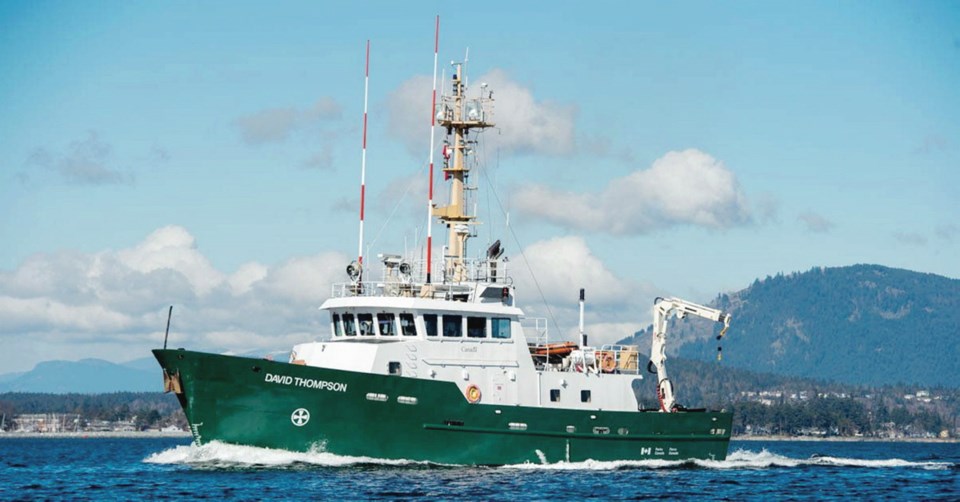Canada’s Environment Minister Catherine McKenna boarded the research vessel David Thompson docked in Victoria’s Inner Harbour Friday as archeologists talked about its upcoming maiden Arctic voyage for exploration and science.
“I’m here to mark the commissioning of the RV David Thompson, Parks Canada’s new research vessel,” said McKenna.
David Thompson was an explorer and cartographer who died in 1857.
The RV David Thompson, which accommodates 14 people, was launched in 1992 as a mid-shore fishery patrol vessel for the Canadian Coast Guard.
In its new mission, it will travel the Northwest Passage, the Atlantic, Arctic and Pacific oceans and the Great Lakes.
“The RV David Thompson will be the main platform for the largest and most important underwater archeology undertaking in Canadian history,” McKenna said.
The ship will enable Parks Canada to continue its exploration of the wrecks of the 19th-century Franklin Expedition ships, HMS Terror and HMS Erebus, in Nunavut.
“Parks Canada believes there are potentially thousands of artifacts remaining on the wrecks that will help unveil more of the Franklin story,” McKenna said.
Archeologists will also collect data for use in climate change science.
“This is something we’ve been working on for years to make happen,” said Marc-Andre Bernier, Parks Canada’s manager of underwater archeology.
In addition to the exploration of the wrecks, there will be research related to marine conservation, he said.
The vessel will depart Victoria in early July.
RV David Thompson and the Sir Wilfrid Laurier will head north past Haida Gwaii and coastal Alaska and into the western Arctic, conducting a variety of science programs en route. That will include depth recordings, a study of microplastic contamination, carbon sinks and documentation of climate change, said Ryan Harris, lead archeologist on the mission.
As the research vessel enters the central Arctic in late July, the focus will be on exploring the Terror and Erebus wrecks.
A pre-positioned support barge in Gjoa Haven, a hamlet in Nunavut, is equipped with a recompression chamber and diving equipment and will be moored over the wreck site, excavating parts of the ships.
Archeologists have about a six-week window to do their work in the Arctic.
The ship will then continue eastbound to Belle Isle Strait along the east coast of Baffin Island and will end its mission in the Gulf of St. Lawrence and the Great Lakes.
Advanced technology aboard the ship includes remotely operated vehicles, a multi-beam sonar system for high-resolution sea-floor mapping and an acoustic system to create three dimensional maps of HMS Erebus and HMS Terror.
“The ship allows us to deploy a full suite of high-tech tools to better understand these remarkable shipwrecks,” Harris said.
HMS Erebus and HMS Terror set out from England in 1845 with 129 men to search for the Northwest Passage. They never returned.
A message found in 1859 by a search vessel said both ships were trapped in ice in late 1846 and remained so for about 18 months. It added that in April 1848, 105 survivors headed out on foot. None survived.
HMS Erebus was located in 2014 in the area of Wilmot and Crampton Bay off Queen Maud Gulf and HMS Terror was located in 2016 in deeper water just to the north in King William Island’s Terror Bay.
McKenna was on hand Friday to share details of the federal government’s $1.3-billion investment in nature, parks and protected areas as announced in the recent federal budget.
The investment will contribute $500 million from the federal government to create a new $1-billion Nature Fund that will use partnerships to secure private land, support provincial and territorial species protection efforts, and help build Indigenous capacity to conserve land and species.



